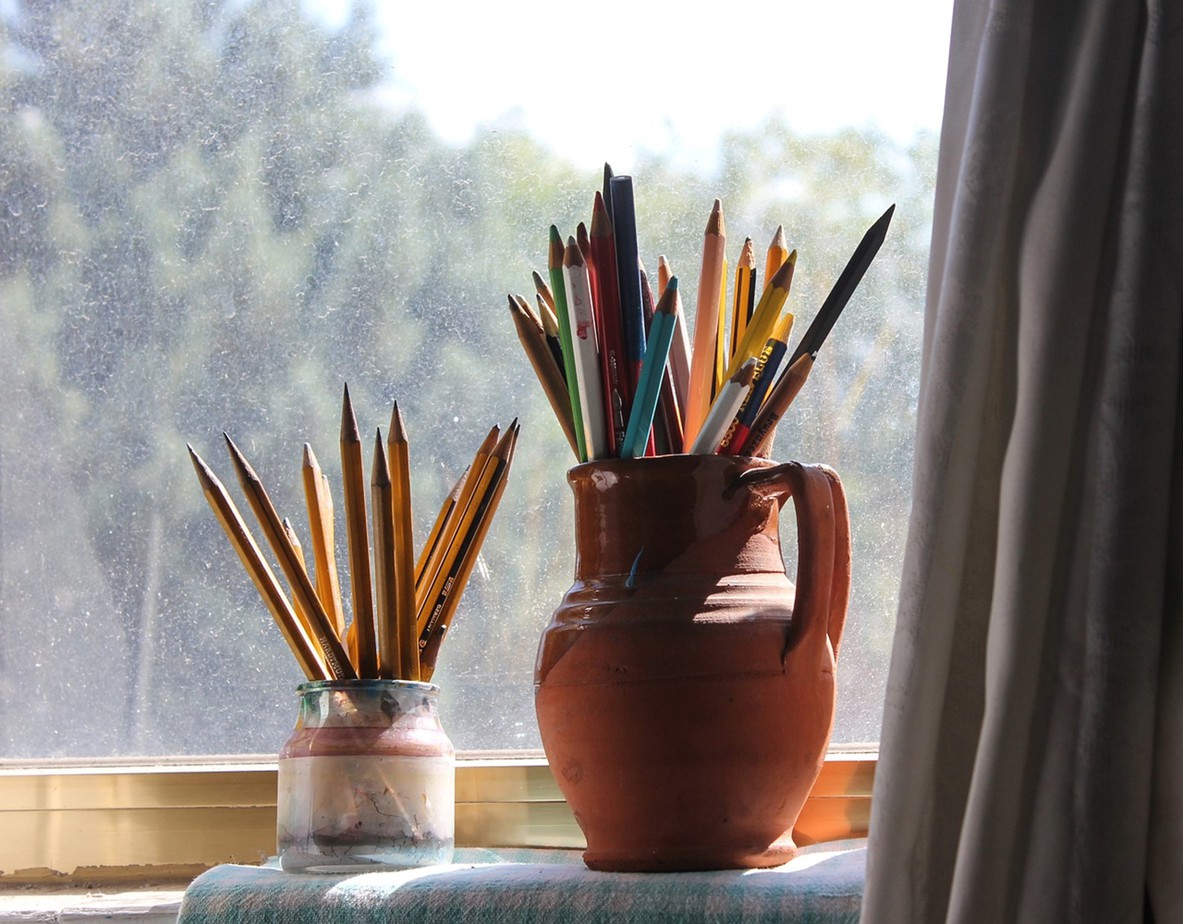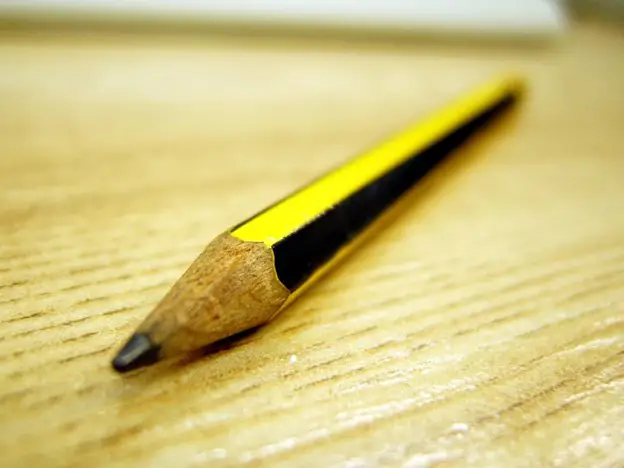A pencil is an evergreen tool used by potters to sketch any designs that need to be added to the piece before the firing process. But you wouldn’t want this sketch to become permanent after being fired. It can make the piece look ugly and unprofessional. So, most potters would want to know that the pencil marks left after the final glaze has been applied should burn off in the kiln. But, does this really happen? Factually, the pencil mark does burn off once the ceramic is placed within the kiln for firing purposes.
So, let us get into the details of this process.
Should Potters Use Pencils to Sketch on Pottery?
The pencil works great when it comes to creating designs to help paint the pottery pieces or art accessories the same. It also helps measure the size of the piece to ensure accuracy. Pencil drawings on bisque-fired clay can be added before glazing. They can also be added to high-fired unglazed clay-like stoneware or porcelain without any type of glaze coating.
Will Pencil Marks Show On Ceramics After Firing?
A pencil can be used to sketch on a ceramic surface. This is similar to using graphite pencils on paper. Pencil marks do burn off when fired within the kiln. Keep in mind that you won’t see any pencil lines even when the pencil smudges with the paint & appears to have discolored the glaze. You don’t have to worry as the pencil marks would fire off & all you would see are clean colors.
How Would You Get Pencil Marks Off Pottery?
If you are uncertain or don’t want to risk spoiling your pottery before placing it within the kiln, you can clean the pencil marks off with a simple solution. All you need for cleaning the pencil marks are something you can find in your kitchen. Pick any unused spray bottle you can find at home and add some water along with 2 tablespoons of white vinegar (distilled).

Now, spray your ceramic with this mixture & gently scrub using a fresh cloth or sponge. In case there are marks left after scrubbing, add some more vinegar to this mixture & use slightly more pressure for scrubbing.
Can A Sharpie Mark Burn Off After Kiln Firing?
Unlike pencils, not all Sharpies burn off after the kiln firing process. This is especially true with silver or black Sharpies. The ingredients in ink matter a lot and would decide the fate of the etchings being burned off or not. A quick rule is to check with a small test piece and fire the same to see if they do burn off. If it does, you can go ahead and use it for your main project.
To be on the safer side, you can make use of underglaze pencils. But, what are they?
Underglaze Pencil: What Is It?
Underglaze Pencils are perfect for shading, identification, or fine-line drawings. You can apply this underglaze pencil on bisque ware to create different types of unique and decorative designs. For underglaze pencils, the maximum kiln firing temperature is at Cone 10 if using green, black, or blue. In case you are using yellow or brown Sharpies, you can opt for Cone 5 firing and Cone 05 firing for Rose color. If you are looking for a standard black-colored underglaze pencil, you can opt for the Pasler Underglaze Pencil. This pack of two pieces adheres to the quality standards under EN71, ASTM F963, and ASTM D4236.

Properties of Underglaze Pencil
| Surfaced Applicable On | Bisqueware or Greenware |
| Cone 10 Firing Temperature | Blue, Green, and Black Underglaze Pencil |
| Cone 5 Firing Temperature | Yellow and Brown Underglaze Pencil |
| Cone 05 Firing Temperature | Rose Underglaze Pencil |
| Ideal For | Drawing Fine Lines, Shading, & Detail Work |
Using Glaze with Pencil Designs
Graphite is best when used to create sketches on your ceramic pieces. However, it is preferred that you pour or spray the glaze in order to avoid issues such as smudging that occurs when you brush the glaze on the clay.
Now, there are two important things that you need to keep in mind before you do so:
-
Do not panic even if the graphite markings smudge off before the firing, as they will eventually burn out, giving you a clean final look.
-
Remember, a glaze isn’t transparent when it is applied to the bisque. However, it will become transparent once the glaze firing process is done and the silica starts to melt.
-
When applying on an opaque pottery glaze, you don’t have to worry about any type of smudging as it won’t be see-through post the firing process.
In case you wish to retain the pencil drawing, the best option is to use underglaze pencils to draw on the surface. Ideally, spray/pour the glaze on top as brushing will induce smudging. It can only come off if you wipe off the glaze and the stain underneath and finally repeat the process. Underglaze smudges tend to become permanent once they are fired. So, practice caution!
What Should You Remember When Firing Ceramic with Pencil Marks?
The first thing you need to keep in mind when firing ceramic with pencil marks is to use a high fire clay. Keep in mind that the graphite marks would burn off only when fired at a high temperature. So, if you plan on sketching with graphite pencils, make sure you pick clay that can be fired at a higher temperature.
However, if you are unsure of the best way to get rid of the pencil marks, you can opt for an underglaze pencil and work your way through the designs.
Conclusion
So, the next time you design something with a regular-use pencil on the ceramic, you don’t have to worry if it will stay post-firing. When you glaze the piece, it might seem that the smudge or etching marks would stay, but they burn out completely. The final piece would have solid and clear colors.







